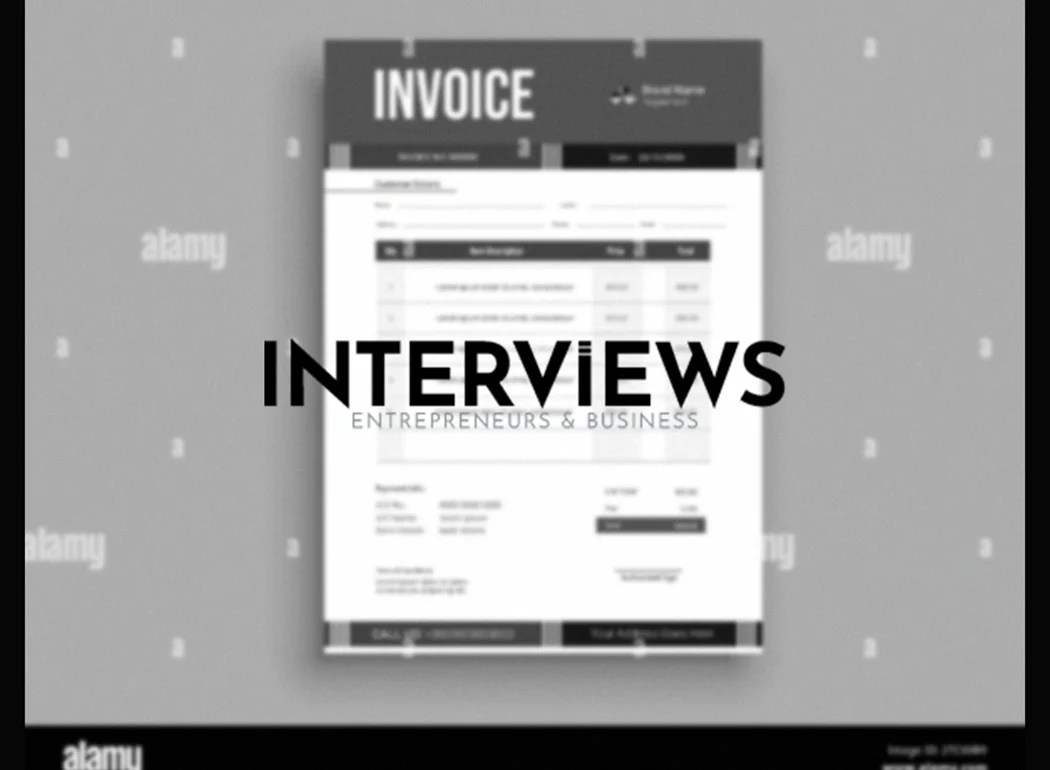Invoice vs. Quote: Know the Difference and Get Paid Faster (Without Crying)
Let’s face it. Getting paid is the main event in running a business, right? But figuring out business documents can feel like ancient hieroglyphics. A “quote” and an “invoice” may seem similar. But they are not. A quote is flirting, while an invoice is proposing marriage (to your money).
Definitions and Purposes: What Are These Things Anyway?
Let’s break down these documents. Understanding them helps you navigate the process.
Quote: Your “Before We Do Business” Document
- The First Step Towards Payment: Quotes are your opening line. They show potential clients, “Here’s what I can do and the cost.”
- Giving a Price Estimate: A quote is a friendly heads-up, a ballpark figure, a proposal. It answers “How much for [insert service]?”
- Issued Before Work Starts: Quotes happen *before* any work starts. They detail services or products and their costs, upfront.
- Informative and Non-Binding (Usually): Quotes inform customers about potential costs for goods or services. They tell clients to say “yes,” “no,” or “maybe tweak this.” It’s a preliminary offer.
Invoice: The “Pay Me, Please” Document
- After the Magic Happens: Invoices arrive after you’ve delivered goods or completed services. They are like a curtain call – time for applause (and payment).
- The Final Bill: It’s the official document detailing what your client owes for the work you just delivered.
- Formal Billing Statement: An invoice is a formal demand for payment after a sale. It’s a record of the transaction between seller and buyer.
- Request for Payment: An invoice is a formal request stating the due amount and payment date. It’s what you send after delivering goods or services.
Key Differences: Spotting the Invoice from the Quote in a Lineup
Think of quotes and invoices as siblings. They are related but not twins. Here are the key differences:
Timing: When Do They Show Up?
- Quote: Early Bird Gets the… Quote: Quotes are the opening act, issued *before* anything happens. It sets the stage for what’s to come.
- Invoice: Fashionably Late (But Necessary): Invoices appear *after* goods have been delivered or projects completed. It’s the “now it’s time to pay” moment.
Purpose: What’s Their Mission?
- Quote: The Information Provider: Quotes inform your customer about costs. They answer the question, “How much will this cost?”
- Invoice: The Payment Demander: Invoices request payment. They detail the total owed for rendered services or delivered products.
Binding Nature: Are We Legally Married Yet?
- Quote: Just Flirting, Not Engaged: A quote is *not* legally binding. It’s a price estimate or proposal. Things can change.
- Invoice: The Marriage Certificate (of Debt): An invoice is pretty final. The amount on it is what the customer *owes* and should not change.
- Estimates vs. Quotations: A Quick Detour: A “quotation” is a fixed price, while an “estimate” is approximate and could fluctuate based on project changes.
Interchangeability: Can We Swap Them Out?
- Nope, Not Interchangeable: Quotes and invoices are not the same. You can’t swap them out easily. Using them correctly shows you know your business paperwork.
Relationship and Workflow: From Quote to Cash (Ideally)
Let’s trace the journey from interest to payment with our two heroes, Quote and Invoice:
Quote -> Order -> Invoice: The Payment Love Triangle
- The Classic Flow: First comes the quote, then if the client agrees, it may convert into a purchase order (PO). Finally, after delivery, you send the invoice. Quote, then order, then invoice.
- Simplifying the Path: Think of ordering pizza. You see a menu (quote), place your order, they deliver, and then hand you the bill (invoice). Simple.
Quote Conversion: Making Life Easier
- From Quote to Invoice – One Click Magic: Good news! Modern accounting software allows for direct conversion from quote to invoice with a few clicks.
- How to Do It: Find “Convert to Invoice” or “Create Invoice from Quote.” This copies details from quoted to new invoice quickly.
- Manual Conversion (For the Old School): If not using software, manually copy information from quote to create your invoice. It works but may take more time.
Matching Amounts: Consistency is Key
- Quote Amount = Invoice Amount (Ideally): If project scope remains unchanged, your invoice amount should match the quote (consider agreed deposits and fees).
- No Discrepancies, Please: It’s important that invoices match final quotes in services, products, pricing, and terms. Discrepancies can confuse clients and harm professionalism.
Invoices: Key Aspects – Becoming an Invoice Maestro
Let’s dive deep into invoices to ensure you issue them like a pro:
When to Issue an Invoice: Timing is Everything
- After Fulfillment: Issue an invoice *after* fulfilling your deal. For products, that means after delivery. For services, it’s once completed.
Content: What Goes Inside?
- Essential Info: An invoice must contain vital transaction details. This includes: your business name, client details, unique invoice number, date, description of goods or services, payment terms, total amount due.
- Itemized and Detailed: Invoices should list each product or service separately with its corresponding price. More detail means better clarity and avoiding confusion.
- Standard
- Elements: Identify fields like invoice date, item details, quantities, prices, and terms. These fields make an invoice a recognized document, both legally and professionally.
Importance: Why Use Invoices?
- Get Paid: Invoices are essential for payment. No invoice means no payment. Remember, “No invoice, no money.”
- Track Receivables: Invoices help track money owed to your business. They help manage who owes what and how long. This is vital for cash flow management.
- Boost Cash Flow: Receiving payments on invoices increases your cash account directly. Invoices keep your business’s cash flowing, vital for operations.
Alternatives: Invoices and Bills
- Also Called “Bill”: “Invoice” and “bill” are synonyms. If someone requests a bill, they mean an invoice.
Payment Timeframe: Payment Duration
- Common Net 30: A standard term is “Net 30,” meaning payment is due in 30 days. Payment terms may vary.
- Different Terms: Terms can depend on agreements with clients or industry norms. You might offer Net 15, Net 60, or immediate payment. Clarity is key on invoices.
Legal Requirements: When Invoicing is Required
- VAT Registration: If both parties are VAT registered, invoicing is mandatory. It ensures compliance. Check local laws for legal invoicing.
Quotes: Key Points – Mastering Quotes
Let’s focus on quotes to help you create effective quotes that win business and avoid legal trouble:
As Contracts: Binding Agreements?
- Not Usually Binding: A quote usually is not a legally binding contract. It offers goods or services at a price but needs formal acceptance to become binding.
Estimates vs. Quotations: Precision Matters
- Quotation = Fixed Price: A quotation indicates a fixed price. The quoted price is what the client pays unless major changes occur.
- Estimate = Approximate Price: An estimate is an approximate price subject to change due to unforeseen issues. Estimates allow more flexibility.
Other Documents: Related Business Documents
Invoices and quotes aren’t alone in business transactions. Here are some related documents:
Receipt: “Payment Confirmed!”
- After Payment: Receipts are issued post-payment. They confirm money received, acting as proof of payment.
- Completes the Transaction: Once the receipt is issued, the transaction is completed. It signals that all is settled.
- Avoid Confusion with Invoice: An invoice requests payment; a receipt proves payment. They serve distinct functions and are issued differently.
Purchase Order (PO): Buyer’s Order
- Buyer’s Inititation: A purchase order is initiated by the buyer confirming their desire to purchase goods outlined in your quote.
- First Step in Transaction: A buyer may use a PO if they know what they want, marking the first official transaction step.
- Confirms Agreement: The PO confirms agreement to quote terms, committing the buyer to the purchase.
Proforma Invoice: Preliminary Invoice
- Prices Agreed but Not Final: A proforma invoice is sent post-agreement on prices but isn’t for actual payment. It’s a draft invoice.
- No Direct Payments: You cannot pay on a proforma invoice. It serves informational purposes until converted into an official invoice for payment.
Legal Considerations: Avoiding Legal Issues
Here are some legal aspects related to invoices and quotes to consider:
Copyright: Avoid Content Theft!
- Avoid Infringement: Do not use copyrighted material in your documents without permission. Unauthorized use can lead to lawsuits.
Disputed Invoices: Non-Payment Issues
- Document Evidence: If a client disputes payment or refuses to pay, gather evidence supporting your case, such as contracts and emails.
- Protect Yourself: Keep documentation if pursuing legal action for unpaid invoices. Evidence protects you in disputes.
Statute of Limitations: Timely Invoicing
- Invoice Without Delay: There isn’t a strict deadline for invoicing but timely invoicing is best practice. Aim for 30 days post-work completion.
- Sustaining Cash Flow: Quick invoicing supports cash flow and minimizes disputes or forgetfulness on the client’s part.
Quotes in Sales: Your Sales Ally
A recognition of quotes and their importance in sales:
- Crucial Sales Stage: Quoting is a critical phase in sales. A well-crafted quote can secure a client or lead to losing them to competitors.
You now have clarity on quotes and invoices. Proceed with confidence in quoting, precision in invoicing, and ensure fair payment without complications. You can do this!





